Strength Training for Hockey Players (Detailed Program)
Author:
Reviewed by:
(21 years of Oly Lifting experience)
Unlock your full potential by engaging with our experts and community! Have questions about your fitness journey or looking for expert advice on weightlifting techniques? Don’t hesitate — leave a comment below and Sergii Putsov will provide a personalized answer and insights to help you reach your goals.
Torokhtiy is reader-supported. Some links are affiliate links, and we may earn a commission at no extra cost to you. See our disclosure page for details.
Hockey is undoubtedly a demanding sport, both mentally and physically. Whether you’re an aspiring hockey player or a veteran of the game, knowing the proper regimes for weight training for hockey is vital. So what is the best way to weight train for hockey?
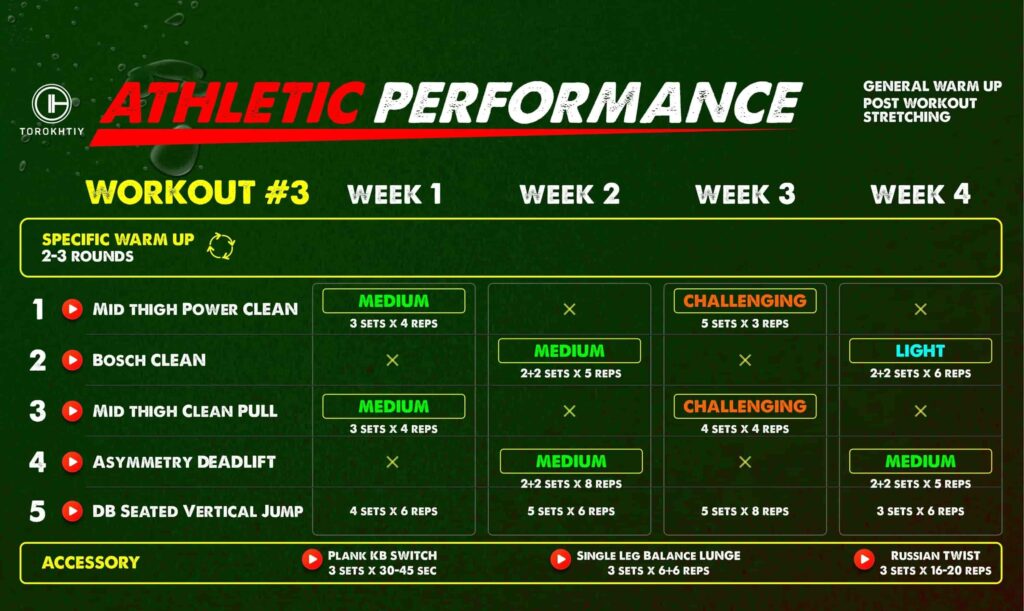
The key to weight training for hockey is to be consistent and ensure you incorporate all your muscle groups when weight training for hockey. A proper well-rounded workout will not only help improve your speed and strength, but it’ll also help improve confidence, both on and off the field.
While a split training workout (such as the focused chest, legs, and arms days) may work for a bodybuilder, this workout is less effective for hockey players.
After making weight training a prominent part of my workout regime, I noticed a significant difference in my hockey and I’ve decided to help you too.
This article will guide you on an effective hockey weight training program, its benefits, and the necessary equipment needed. So, let’s get started!
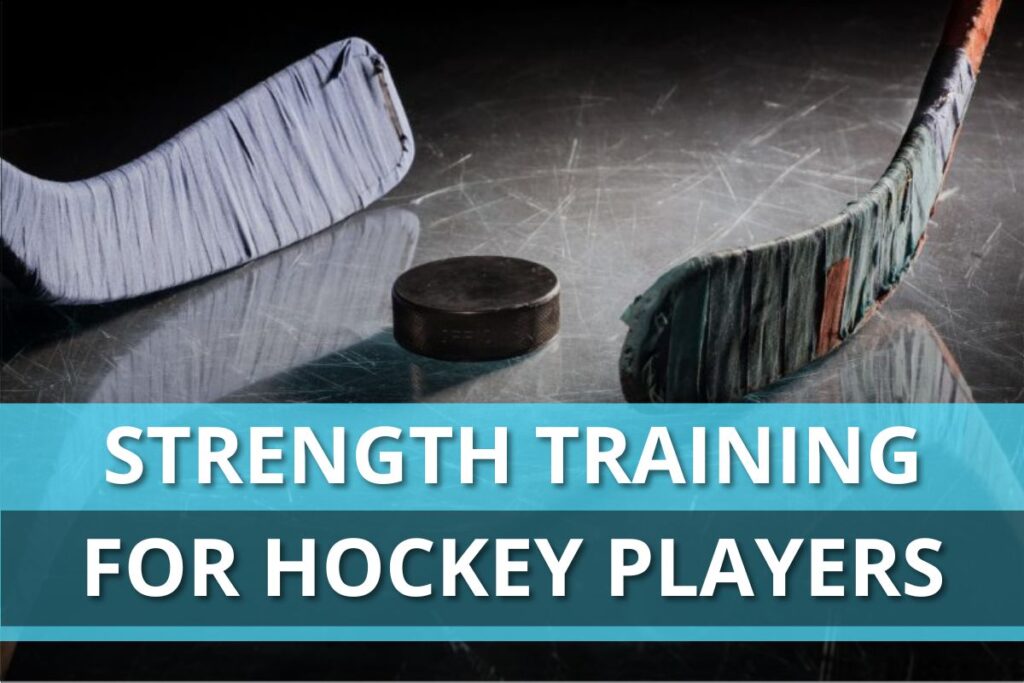
What is Strength Training For Hockey Players?
While you may think being skilled in the game is all you need to be a good hockey player, the truth is far from it. To be a true master of the game, you must also train your body to build the stamina, flexibility, and strength required for hockey.
Strength training for hockey is exactly what the name implies – it involves training your body by lifting heavy weights to build strength and power.
Here, it’s important to remember that you should always refrain from lifting heavy weights from the start. The ideal way is to start with light weights and build your strength as you progress.
Important: You should strength-train your entire body for optimal results, especially during the pre-season.
Focused exercises that target your primary muscles are extremely crucial. While playing hockey, you mostly use your adductors, quadriceps, hamstrings, and gluteus muscles. These are located mostly in your core, lower body, and thigh regions.
Ideal Time to Start Strength Training
The best time to start strength training is after you hit your adolescent growth spurt. For boys, this is 16 years, and for girls, it’s 15.
Starting strength training too early is not recommended and can negatively affect muscle growth. During your early teenage years, you should primarily focus on staying active and maintaining a healthy lifestyle.
4 Benefits of Strength Training For Hockey Players
Not only does strength training help improve your body’s weight-lifting capacity, but it also has many other benefits as well.
Weight lifting for hockey players is crucial because it also helps you increase your confidence, on-field performance, and stability. It’s also vital for injury prevention, strengthening your core muscles, and hormonal balance.
Here are some of the benefits that strength training holds:
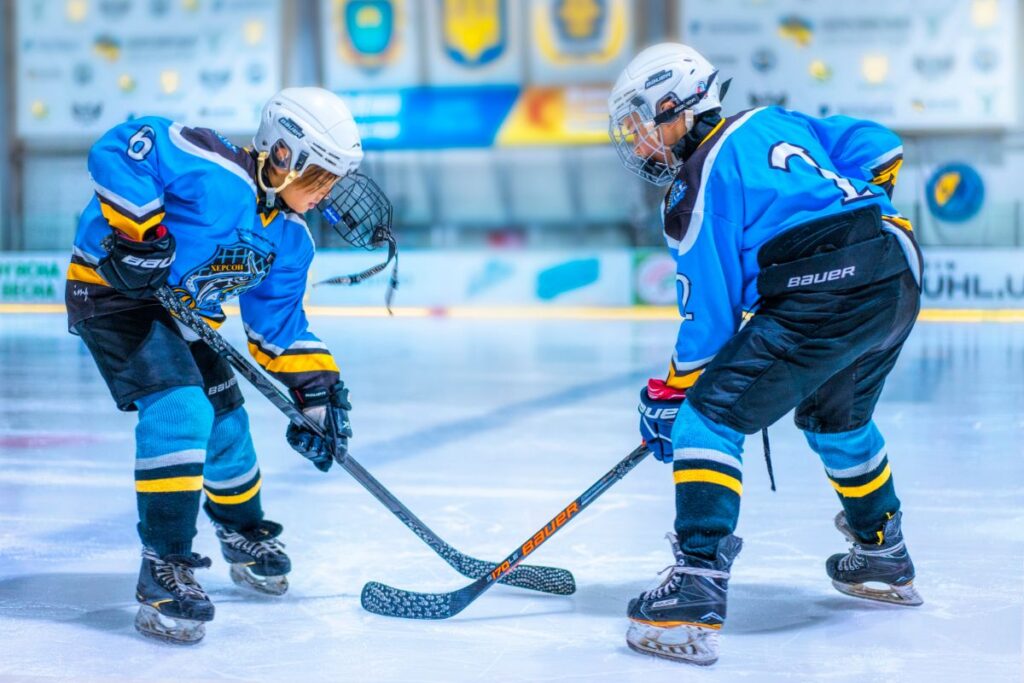
Increases Athletic Capabilities
As mentioned earlier, being a good athlete is more than being skilled in the game. Hockey players need to be quick on their feet and have fast reflexes.
Strength training helps you build power and speed, improving your athletic capabilities. Your core also gets stronger, which reduces back pains and improves overall strength.
You need strong legs and core muscles to sprint better, which is achieved through lifting weights and strength training. If you’ve got strong muscles, you’ll be able to hit the hockey pluck harder as well. Your drag flicks will be more powerful, and your leads will be fiercer.
Improves Confidence
A good performance on the field occurs when both your body and mind are in perfect sync with each other.
Strength training requires immense endurance and determination, which also helps strengthen your mind. And I’m not making this up. Research suggests strength training slows down the aging process and improves cognitive functionality among many other benefits.
When you convince yourself to do that 400-pound deadlift, you can also convince yourself to give your best on the field.
Prevents Injuries and Speeds up Healing
Not only does strength training improve your lifting capabilities, but it also largely helps improve your balance as well.
Improved balance means that there are fewer chances of you falling and getting injured. If you use the proper technique and the right form, your muscles increase proportionately, improving your balance.
Conversely, if your form is not right, you may injure yourself even before you get on the field. A proper trainer can help you fix your form during these exercises.
On the off chance that you do injure yourself, your recovery will be much faster as well. When you get your muscles used to the added stress of strength training, they can handle the pressure of injuries much more efficiently.
A lot of times, lifting light weights and strength training can heal muscle injuries as well, but in case you’ve got an injury, you must consult a professional.
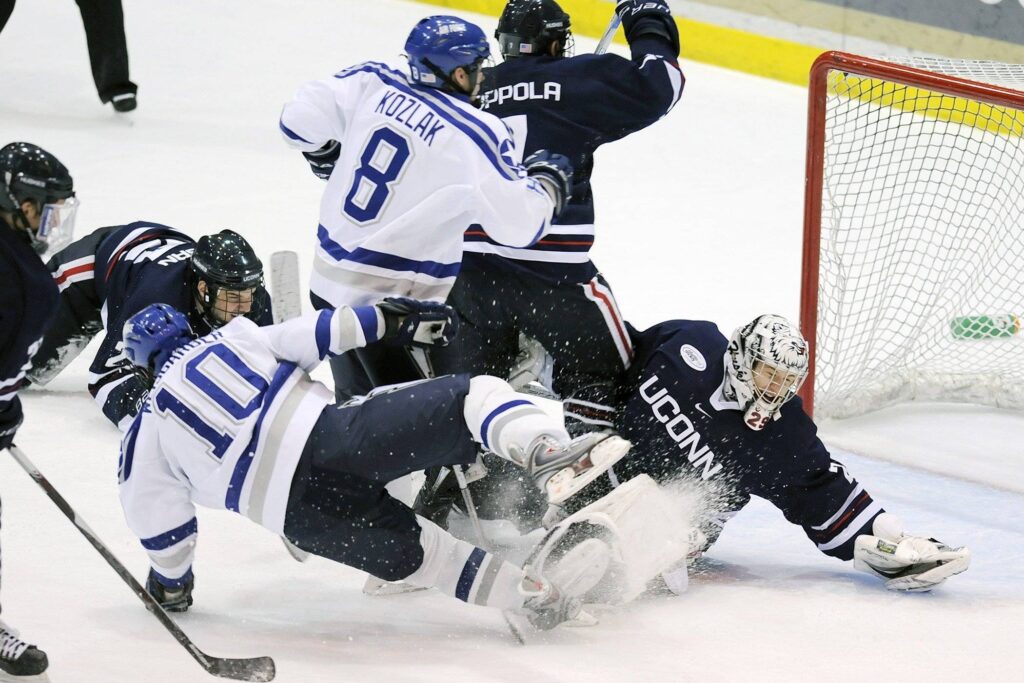
Helps Balance Hormones
Whether on the field or on ice, good hockey players need to maintain their energy levels throughout the game.
Hormonal balance is a major contributor to your energy level, particularly the insulin hormone. Strength training helps improve insulin sensitivity which helps restore your glycogen stores faster after they’ve been used up during the game.
Your metabolism improves with improved hormonal balance, so you no longer need to worry about weight gain.
Follow us!

Free!
Get a 2-week Weightlifting Program as a bonus for the subscription to kickstart your training plan!

Free!
5 Strength Training Exercises For Hockey Players
Hockey strength training is similar to regular strength training exercises. The main difference lies in the frequency of these exercises and the time of the year. While some exercises are great during pre-season training, others are a better area of focus during off-season workouts.
A well-rounded hockey lifting program focuses on all muscle groups instead of specific ones. If you overwork particular muscle groups, your chances of injury may increase.
Here are some exercises you need to add to your weight-lifting regime for a good training session:
Bench Press
It may sound basic, but bench press is an important part of weight training for hockey. It helps build upper body strength, focusing primarily on your triceps, biceps, pectoralis, and deltoid muscles. These muscles are located in your chest and upper arms.
Lay down on the bench with your back flat on it. Make sure not to arch your upper back because you’re primarily looking for strength – not appearance. Lift the bar off its stand and lower it down to your chest. Now lift it back up in a controlled manner.
Repeat as many times as indicated in one set.
Hang Cleans
Personally, my favorite weight training exercise is the hang cleans. This exercise helps you train your entire body, from arms to legs. It engages your core and helps build your arm and leg muscles which will help you in hockey.
Hold the bar at a shoulder-width grip. Press your heels inwards and lift the bar to your chest, giving it all your strength.
Hold it up here for a second, then put it back on the ground and start again.
Squats
Who doesn’t love squats? They’re simple and very effective for stronger legs and thigh muscles. Squatting uses all the muscles in your hip and upper leg region – the glutes, quads, hamstrings, and flexors. Add some weights, and you’ve got a great strength training exercise.
Lift the bar to the shoulders and stand with your feet shoulder length apart. Now keep your back straight and go down till full squat position with tight lower back, then recover actively.
Repeat this as many times as the set requires.
Deadlifts
Another exercise that significantly helps improve your speed during hockey is deadlifts. Deadlifts work like magic for hockey, and you’ll start feeling a difference in your performance after a few deadlift sessions. It focuses on the core and leg muscles, helping you gain strength and preventing injury.
Start with your feet shoulder length apart. Grab the bar with your arms a little further apart than your legs. Now, driving strength from your hips as if you’re pushing against the ground, lift the bar.
Make sure your back remains straight. Hold it in this position for a few seconds and slowly lower it. Repeat as necessary.
Chin-Ups / Pull-Ups
If you want to add force to your strikes, make pull-ups your best friend – trust me, you won’t regret it. This exercise helps tremendously with upper arm and shoulder strength.
For the Pull-up, Grab the pull-up bar in a pronated grip (palms not facing you) with your arms greater than shoulder-width apart. Now using all your upper arm and back strength, pull yourself up to the bar such that your chin is above the level of the bar. Repeat as many times as necessary.
For a chin-up, grab the pull-up bar in a supinated grip (palms facing you) and pull yourself towards the bar so your chin is close to the bar. Aim to get your chin higher than the bar. This exercise works your biceps and lats along with your forearms.
Which Exercise to Do When?
Even though all the exercises mentioned above are quite versatile, and you can do them throughout your training program, some exercises are to be focused on more during different seasons.
Ideally, during early pre-season, you should increase the frequency of:
- Bench presses.
- Squats.
- And deadlifts.
Whereas during late pre-season, focus more on hang cleans with other exercises.
During mid-pre-season, you should be focusing more on:
- Pull-ups.
- Bench presses.
- And deadlifts.
You can alternate between mid-pre-season and late pre-season workout regimes for in-season training.
5 Key Factors in a Hockey Player’s Strength Training Routine
While strength training is vital to a hockey player’s training routine, strength training isn’t as simple as lifting weights and doing squats. Many factors come into play, and it’s vital to consider them all when deciding on your hockey weight training program.
It’s important to maintain mobility in both your thoracic and hip regions. Focusing on bilateral and unilateral strength is also extremely important to minimize injury risks and maximize the benefits.
Concentrating on the following key factors will significantly help improve your strength training routine:
Hip Mobility
Hockey requires a lot of hip movement and flexion. Whether you’re passing the puck, tackling, or even contesting for the ball, your hips are being used. If your hips don’t have a good range of motion, this can add unwanted stress to your back, leading to injuries.
Add exercises such as spiderman, lunges, squat holds, or downward dog to your training regime to improve hip mobility.
Thoracic Mobility
For faster tackles and reflexes, having a good range of motion in your upper back is very important.
A mobile thoracic spine helps reduce the stress per cross sectional area and relieves unwanted strain from the tissues and muscles. This helps reduce the chances of injury. Adding T-rotations, spiderman rotations, and wall lat stretches to your workout regime can help improve your thoracic mobility.
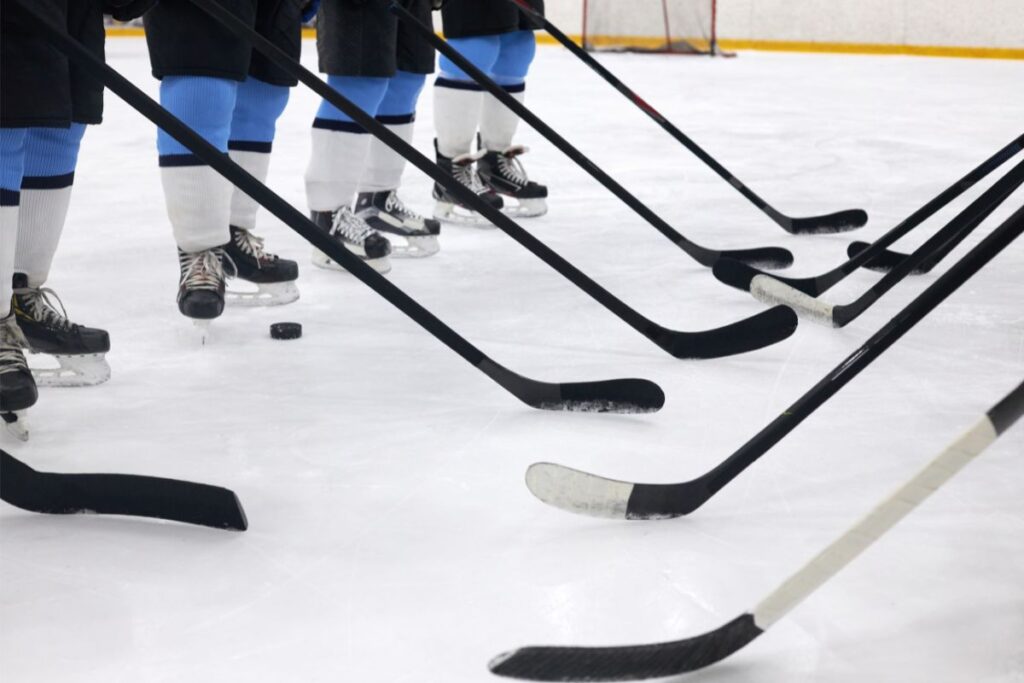
Bilateral Strength
Whether it be your legs, hips, or arms, maintaining bilateral strength in your body is vital for a good hockey game. Training your muscles to go into deep flexion is important for improving your range of motion and preventing injuries. For this, it’s important to maintain proper posture during your weightlifting regime. Improper posture during squatting can cause lower back injuries and reduce your speed during the game.
Unilateral Strength
It’s crucial to factor in unilateral strength exercises when strength training. When doing bilateral exercises such as squats or deadlifts, it’s natural to put more pressure on the stronger side of the body. This leaves the weaker side of the body at a greater risk for injuries – especially during the game.
Unilateral focused exercises help ensure that both sides of the body get equal amounts of training. Incorporating exercises such as single-leg squats and forwards and reverse lunges into your regime can help make significant improvements to your workout.
Upper Body Strength
Although your lower body is the main focus point, upper body strength training is a major factor for a good game. Training your upper body helps improve the power with which you strike. On the other hand, if your upper body is weak, a simple push from an opponent may make you lose balance and get injured.
For upper body strength training, horizontal exercises such as push-ups and bench presses and vertical exercises such as military and shoulder presses can significantly help.
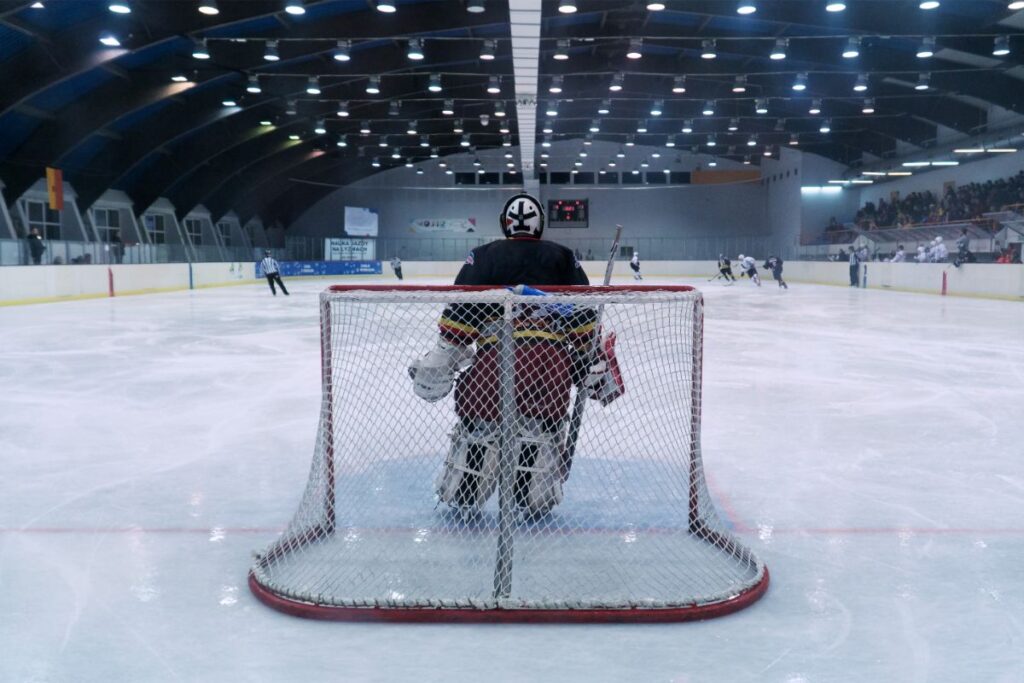
Strength Training Program For Hockey Players
If you’re looking for a strength training program to begin your regime, here’s an example program that worked for me. Add weights to these exercises – begin with lower weights and increase them as you build your strength.
| Product | Early-Pre-Season | Mid-Pre-Season | Late-Pre-Season | In Season | Off Season |
| Exercises to do | Barbell squat or dumbbell squat Dumbbell incline bench press Romanian deadlift, Dumbbell biceps arm curl Dumbbell triceps extension Seated cable row Wide grip Lat pulldown Reverse crunch | Alternate single leg sled hack squat Barbell bench press Romanian deadlift Wide grip Lat pulldown Pull-ups – 3×6 Alternate, single-leg dumbbell upright row | Barbell or dumbbell hang clean Alternate, single-leg seated calf raises One arm cable raises Cable push-pull Medicine ball standing twist with partner Alternate, single-leg medicine ball push press | Alternate between mid-pre-season and late-pre-season. | Rest and enjoy the break. |
| Duration | 4-6 weeks | 4-6 weeks | 4 weeks | Throughout the season | |
| Days/Week | 2-3 days | 2-3 days | 2-3 days | 2 days | |
| Reps | 12-15 | 3-6 | 8-10 | – | |
| Sets | 2-4 | 3-5 | 2-3 | – | |
| Rest Between Sets | 30-60 seconds | 4-5 minutes | At least 1 minute | – |
Program Example 2
Day 1: Power and Upper Body Strength
1. Bench Press: 4 sets x 6-8 reps
Focus on explosive concentric movement
2. Pull-Ups: 3 sets x max reps
Aim for full range of motion and controlled tempo
3. Atomic Landmine Rotations: 3 sets x 10 reps per side
Focus on rotational power and stability
4. Asymmetry Press: 3 sets x 8 reps per side
Emphasize balance in pressing strength
Day 2: Lower Body Power and Explosiveness
1. Back Squats: 4 sets x 8 reps
Focus on full depth and explosive upward movement
2. Deadlifts: 4 sets x 6 reps
Drive through the hips while maintaining a straight back
3. Hang Cleans: 3 sets x 4 reps
Focus on explosive hip drive and full extension
4. Box Jump: 3 sets x 5 reps
Emphasize explosive jump with soft landing
Save it for easy access!
Bookmark this page now to access the program and instructional videos anytime, anywhere.
Stop wasting time searching during your gym sessions.
Day 3: Core and Functional Training
1. Barbell Squat Jump: 3 sets x 6 reps
Emphasize power through the jump
2. Single-Leg Box Jump: 3 sets x 6 reps per leg
Focus on balance and explosive power
3. Paloff Press: 3 sets x 10 reps per side
Maintain core engagement against resistance
4. T-Plank: 3 sets x 20 seconds per side
Emphasize core stability
Volume and Intensity Guidelines:
Warm-Up: Begin each session with dynamic stretching and activation exercises.
Rest Intervals: Allow 2 minutes between compound lifts and 1-1.5 minutes for accessory exercises.
Load: Start at 50-60% of your 1RM, progressively increasing the load.
Accessory Exercises: Focus on form and stability with moderate weights.
Mobility and Recovery Tips:
- Stretch the hip flexors, hamstrings, and shoulders to maintain mobility.
- Use a foam roller to release muscle tightness.
- Ensure adequate sleep, hydration, and nutrition for optimal recovery.
Basic Equipment Required for Weight Training for Hockey
To properly strength train for hockey, the usual route is to opt for a gym membership and a personal trainer (if you can afford one). But don’t worry, if you don’t want to spend for a gym membership or a trainer; you can simply buy training equipment at home and start from the basics.
Here’s the equipment required for weight training for hockey:
Resistance Bands
Resistance bands are compact, affordable, and easy to travel with. They’re also extremely versatile, and you can easily incorporate them into most of your strength training workouts.
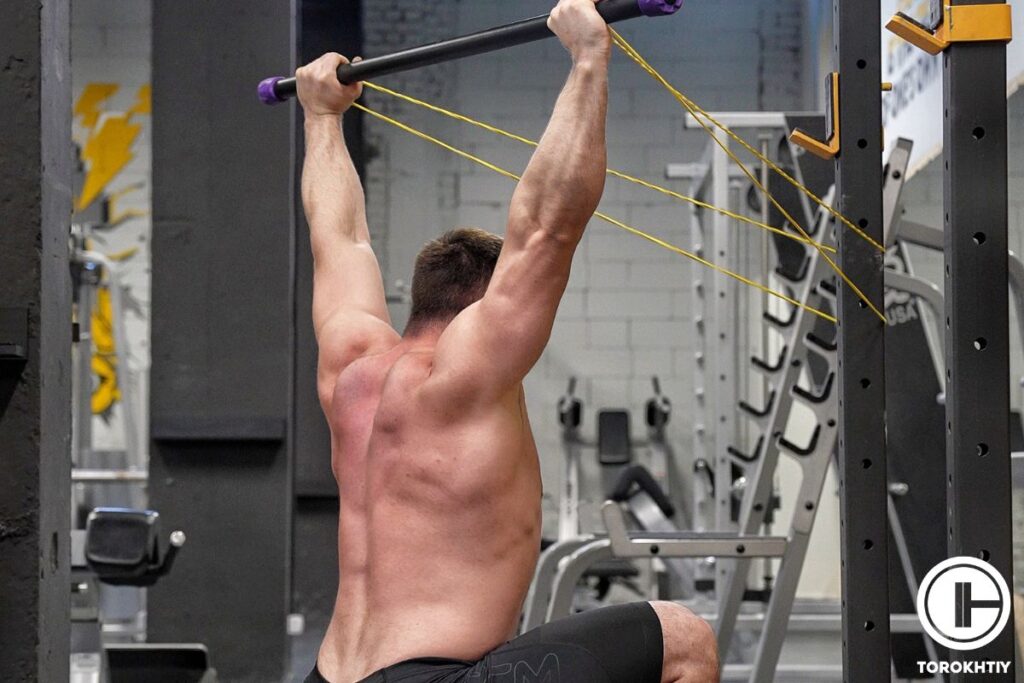
Dumbbells
Do I need to say more? Dumbbells are an absolute strength training essential. If you’re a newbie, start with lesser weights and build up your dumbbell collection as you gain more strength.
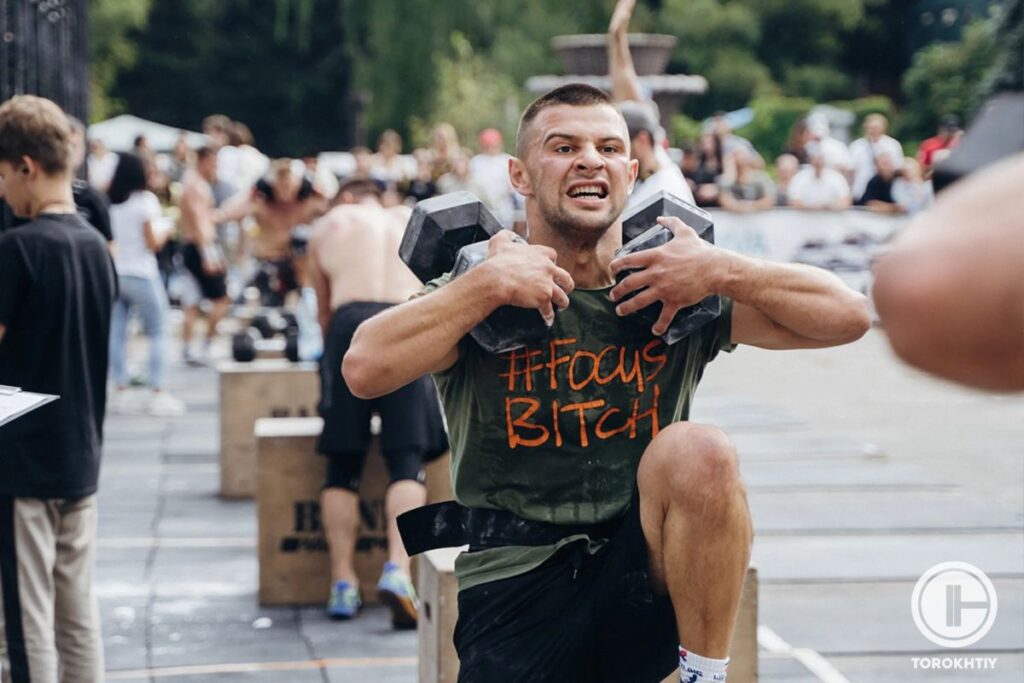
Adjustable Bench
Adjustable benches come in a wide range of price points. If you don’t have the budget for it, investing in a fancier bench is unnecessary. As long as your bench has an adjustable feature and is sturdy, it’ll do the job.
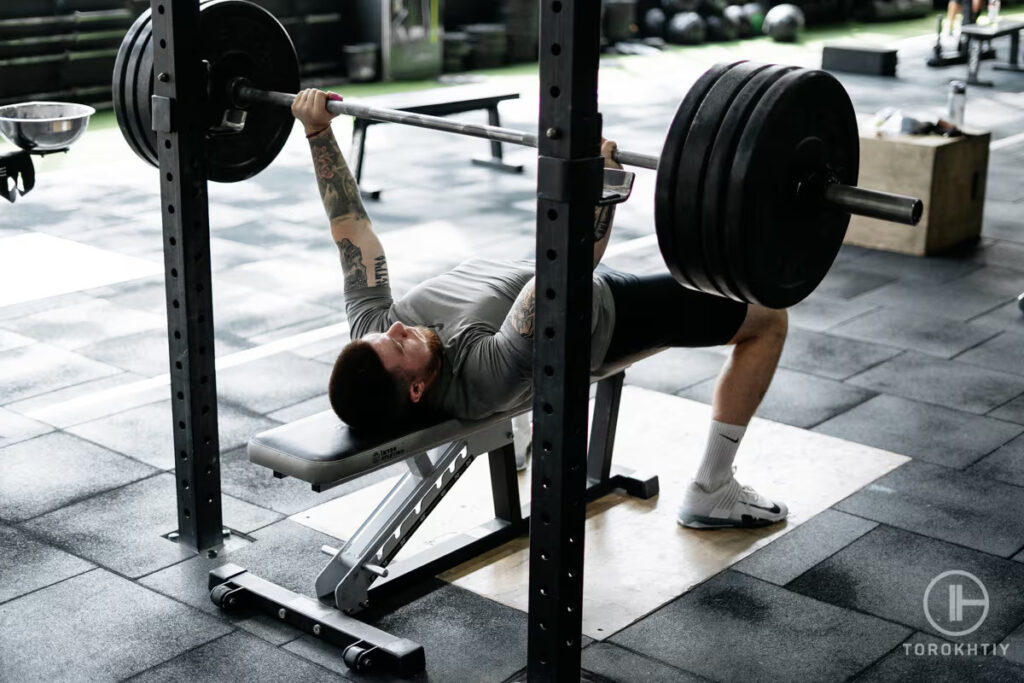
Pull-Up Bars
Another absolute gym essential when strength training is a Pull-Up Bar. You can place them in your garage or balcony or find a doorway pull-up bar that can attach anywhere high up on the wall. They barely take up space and are fairly cheap.
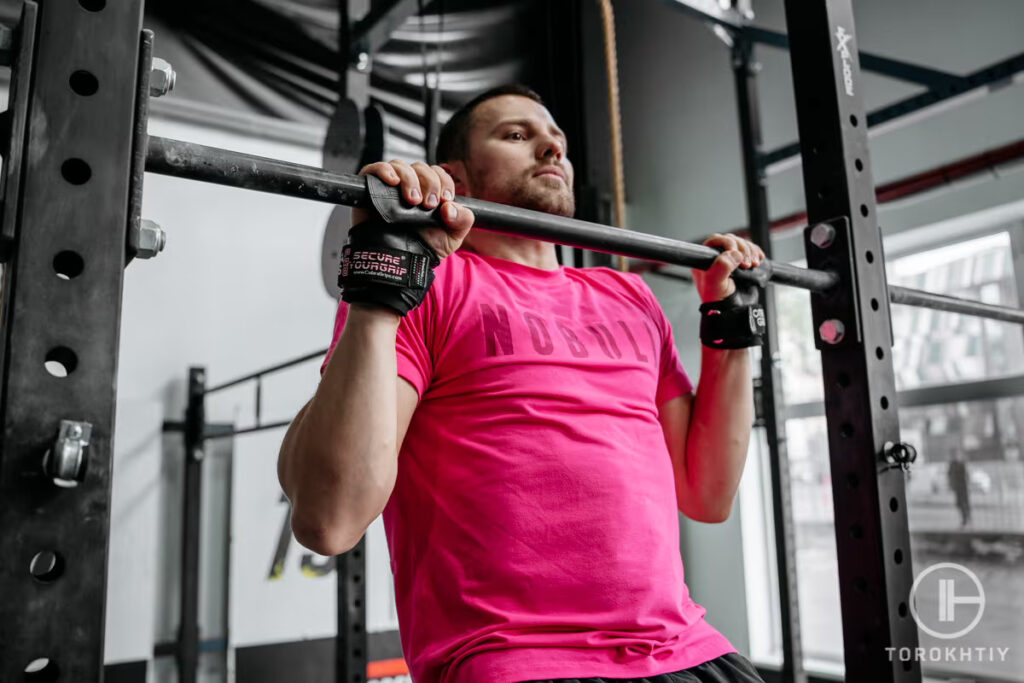
Bar and Weights
Invest in a strong bar and added weights for optimal strength training. From bench presses to deadlifts and weighted squats, the bar and weights will always be put to use.
For beginners, it’s best to initially invest in lesser weights and buy heavier ones as you progress.
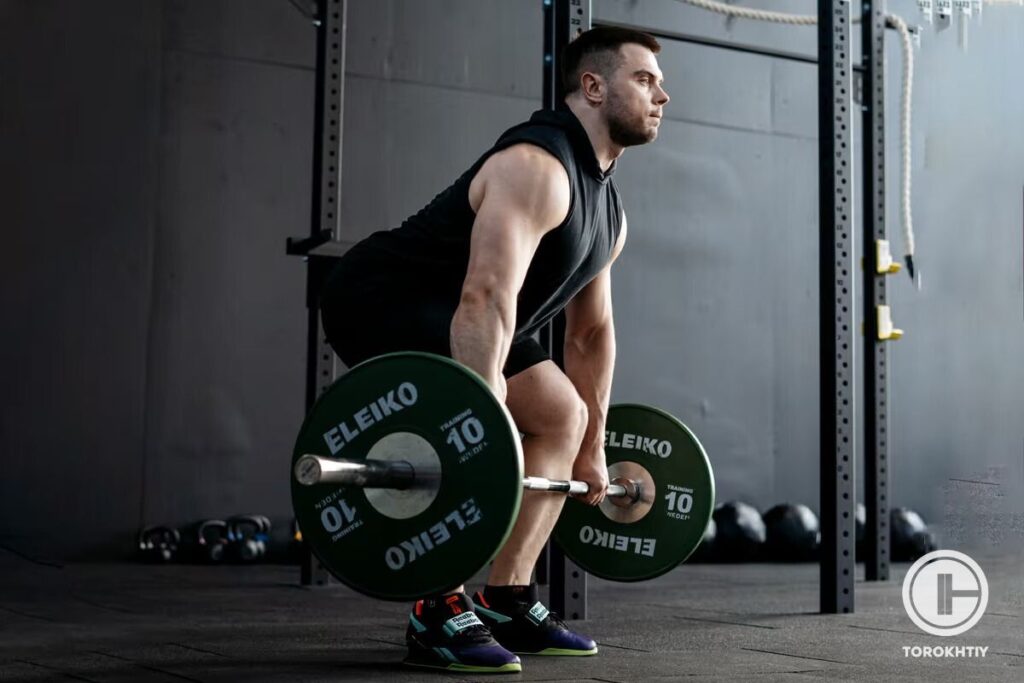
FAQ
What Lifts Are Best For Hockey Players?
Deadlifts and weighted squats are the best lifts for hockey players. Deadlifts help strengthen your upper body and core, whereas weighted squats help you gain lower body strength. These exercises strengthen muscles and prevent injuries that could occur commonly while playing hockey.
Does Weightlifting Help Hockey Players?
Weightlifting significantly helps to improve a hockey player’s performance on the field. It helps build endurance and strength, which improves stamina, speed, and strike force on the field. As a bonus, it improves cognitive function and improves reflexes.
How Often Should a Hockey Player Lift Weights?
Having about 3-4 weight training workouts in a week is best. You already get a lot of cardio in during the game and from other stamina-building exercises. It is also important to note that training more than four times a week can overwork the muscle groups and increase the chances of injury.
Conclusion
Weight training is a vital part of your training if you want to be a great hockey player. It helps build stamina and endurance and greatly reduces the chances of injury. Make sure, when weight training, you equally train all your muscle groups. Putting more focus on one side than the other can lead to serious injuries.
Plus, if you can afford a personal trainer and gym membership, that’s great. But training in the comfort of your home is also possible if you buy the necessary equipment.
Will you integrate weight training into your hockey training workout? Comment below and let us know. Also, I’d love to know which strength training workout worked best for you and why.
Also read:
- Strength Training for Runners
- Weight Training for Wrestling
- Strength Training for Throwers
- Strength Training for MMA Fighters
- Weight Lifting for Tennis
- Strength Training for Cyclists
- Strength Training for Soccer Players
References:
- Strength Training and Insulin Resistance: The Mediating Role of Body Composition // NCBI: https://www.ncbi.nlm.nih.gov/pmc/articles/PMC7235686/
- Strength-Cognitive Training: A Systemic Review in Adults and Older Adults // Frontiersin: https://www.frontiersin.org/articles/10.3389/fpsyg.2022.855703/full
- Cardio-Respiratory Endurance Responses Following a Simulated 3 × 3 Minutes Amateur Boxing Contest in Elite Level Boxers // NCBI: https://www.ncbi.nlm.nih.gov/pmc/articles/PMC6315673/
- Effects of plyometric training on endurance and explosive strength performance in competitive middle- and long-distance runners // NCBI: https://pubmed.ncbi.nlm.nih.gov/23838975/
- Strength training can help protect the brain from degeneration // Sydney Edu: https://www.sydney.edu.au/news-opinion/news/2020/02/11/strength-training-can-help-protect-the-brain-from-degeneration.html
- Photos by Torokhtiy Media Team; walik, Canva.com; Oleksandr P, Pexels; 12019, Pixabay; Tony Schnagl, Pexels; Marcin Gierbisz, Pexels.
Why Trust Us?
With over 20 years in Olympic weightlifting, strength training, nutrition coaching, and general fitness our team does its best to provide the audience with ultimate support and meet the needs and requirements of advanced athletes and professional lifters, as well as people who strive to open new opportunities and develop their physical capabilities with us.
By trusting the recommendations of our certified experts in coaching, nutrition, and sports training programming, as well as scientific consultants, and physiotherapists, we provide you with thorough, well-considered, and scientifically proven content. All the information given in the articles concerning workout programming, separate exercises, and athletic performance, in general, is based on verified data.
The product testing process is described in more detail here.
Author: Sergii Putsov
Head of Sport Science, PhD
Best Results: Snatch – 165 kg,
C&J – 200 kg
Sergii Putsov, Ph.D., is a former professional weightlifter and National team member, achieving multiple medals in the 94 kg weight category at national competitions. With a Master’s degree in “Olympic & Professional Sport Training” and a Sport Science Ph.D. from the International Olympic Academy, Greece, Sergii now leads as the Head of Sport Science. He specializes in designing training programs, writing insightful blog articles, providing live commentary at international weightlifting events, and conducting educational seminars worldwide alongside Olympic weightlifting expert Oleksiy Torokhtiy.
Reviewed by: Oleksiy Torokhtiy
Olympic Weightlifting Champion, PhD in Sport Science
Best Results: Snatch – 200 kg,
C&J – 240 kg
Oleksiy Torokhtiy is a professional athlete boasting 20 years of experience in Olympic weightlifting. With multiple European and World titles under his belt, he has showcased his prowess in two Olympic Games (Beijing 2008 and London 2012). Upon concluding his illustrious career, Oleksiy dedicated himself to coaching. By 2022, he had conducted over 200 weightlifting seminars worldwide. He is the visionary behind an international sportswear and accessories brand known for its motto, “Warm Body Cold Mind.” Additionally, he is an esteemed author and the creator of a series of training programs and eBooks.




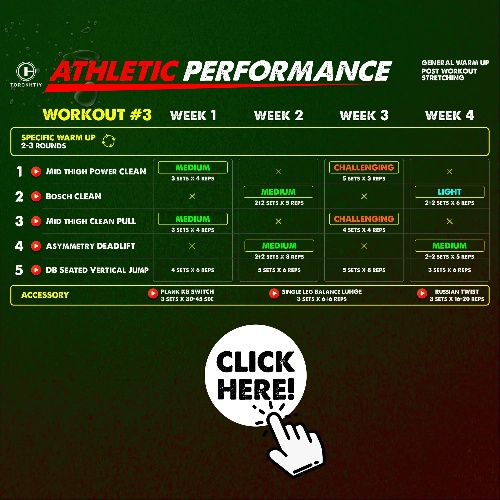

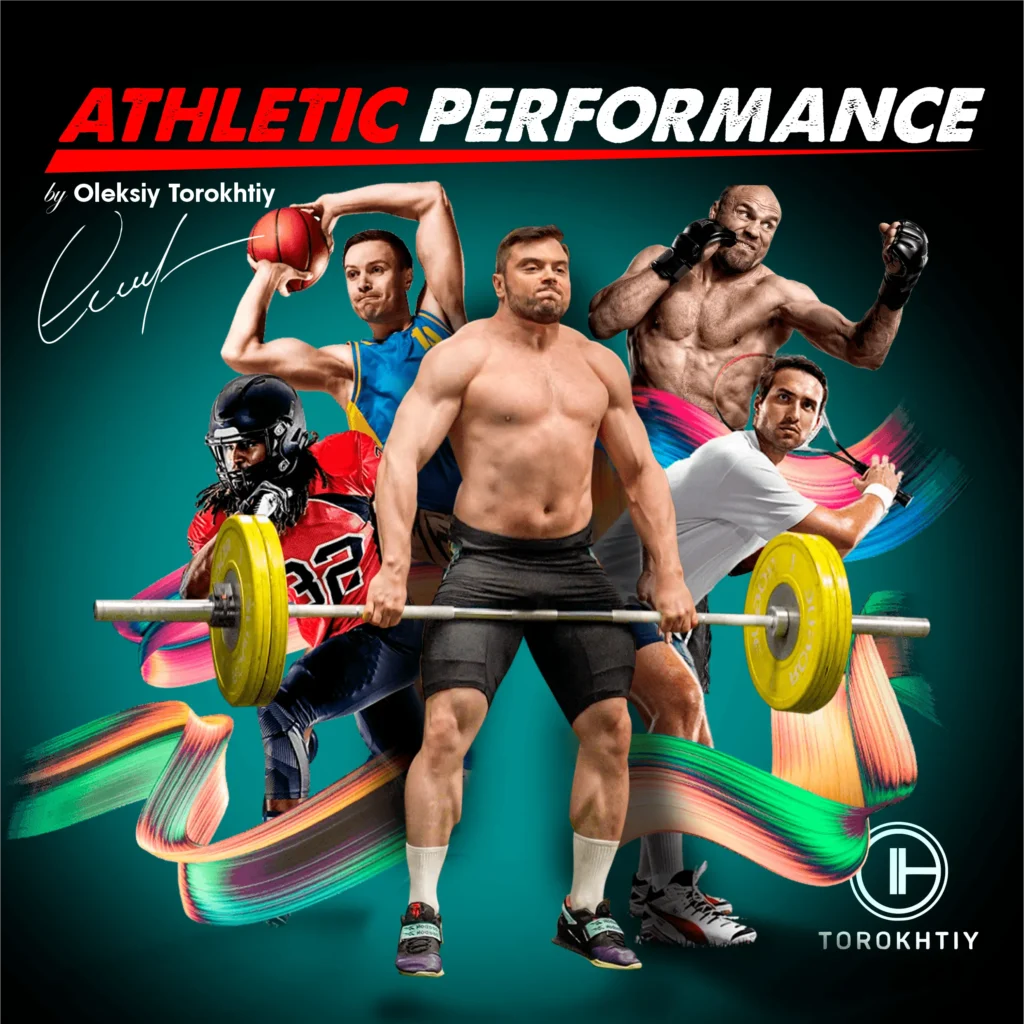
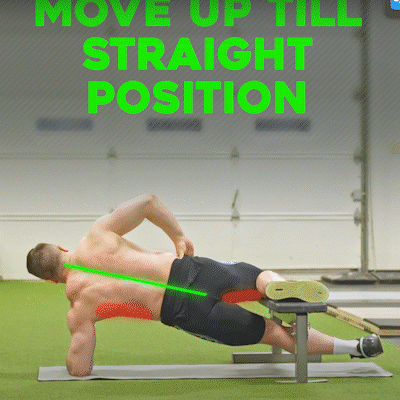
Still have questions after reading our article? Unlock your full potential by engaging with our experts and community! Don’t hesitate — leave a comment below and Sergii Putsov will provide a personalized answer and insights to help you reach your goals.